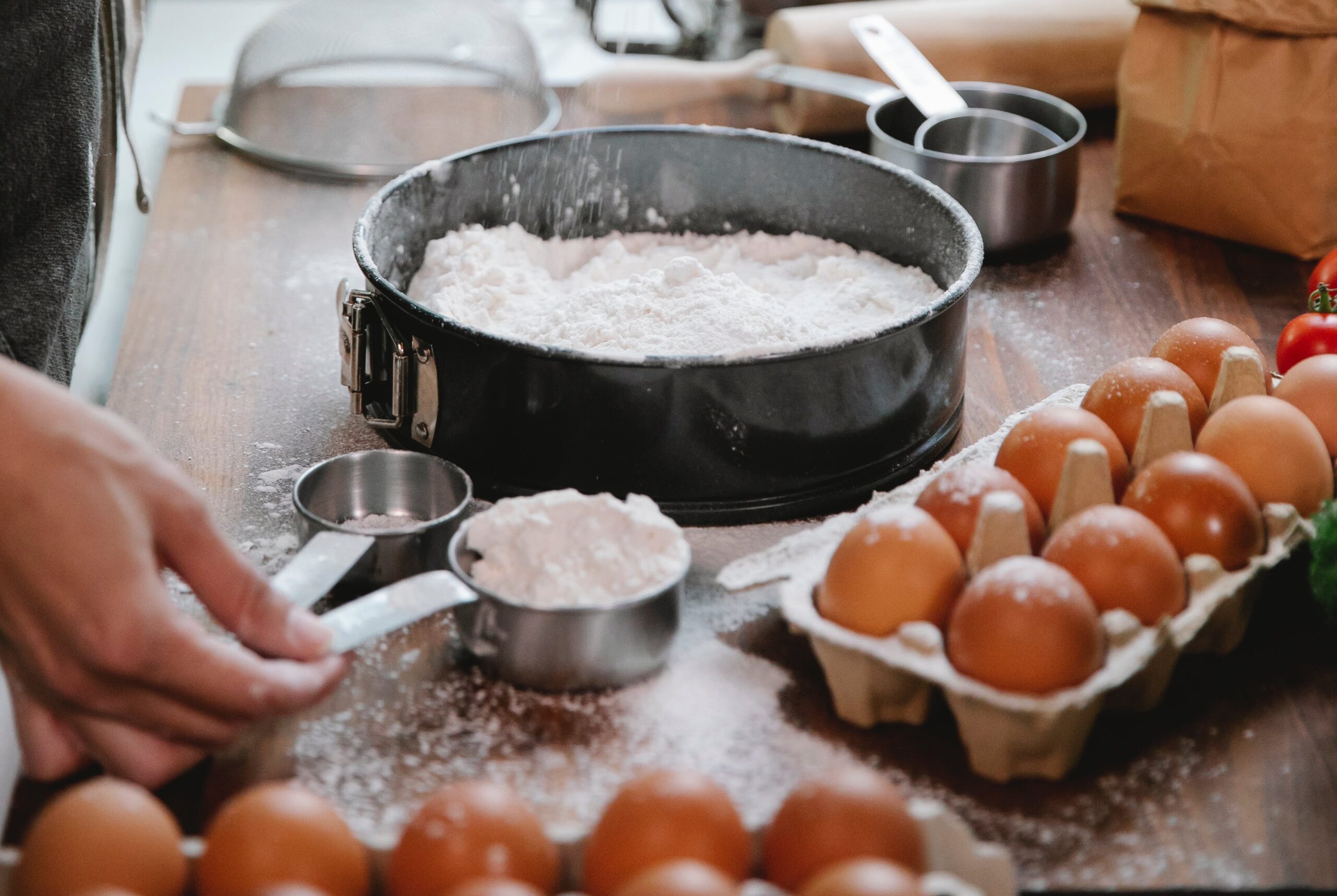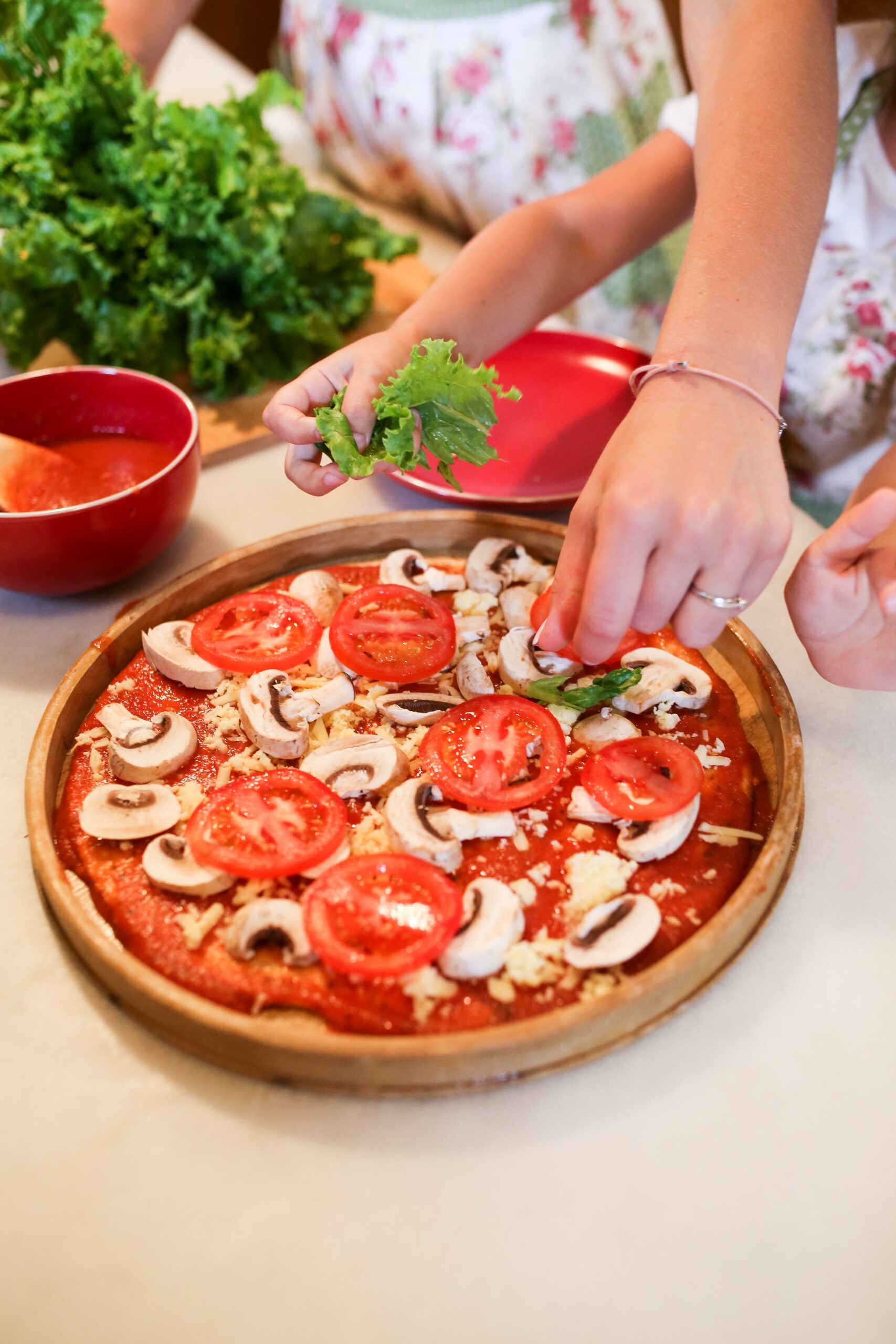To make pizza dough from scratch, combine flour, yeast, water, salt, and oil, then knead until elastic. Allow the dough to rise until doubled in size before shaping.
Creating your very own pizza dough at home is both a delightful and rewarding experience that can elevate your homemade pizza to a new level of deliciousness. This simple, yet versatile base is the cornerstone of any great pizza, providing the perfect canvas for all your favorite toppings. To know more about how to make pizza dough from scratch, let’s read in.

Overview Of The Ingredients And Tools Needed
To start to make pizza Dough At Home, you need basic ingredients: flour, yeast, water, salt, and oil. A mixing bowl, measuring cups, a scale, and a good surface are essential too.
| Ingredient | Tool |
|---|---|
| All-Purpose Flour | Measuring Cups |
| Active Dry Yeast | Kitchen Scale |
| Warm Water | Mixing Bowl |
| Salt | Spoon |
| Olive Oil | Rolling Pin |
- Flour: the base of the dough.
- Yeast: makes the dough rise.
- Water: combines with yeast for growth.
- Salt: adds flavor.
- Oil: gives elasticity.
- Gather ingredients.
- Measure with care.
- Mix and knead the dough.
- Let it rise to double its size.
- Roll out and top with favorites.
- Bake to perfection.
Equip yourself with these items, and you’re ready to make delicious, homemade pizza dough!
The Science Behind Pizza Dough

Welcome to the fascinating world of homemade pizza where every twist, toss, and knead takes you closer to that magical pie. Underneath the toppings and cheese lies the foundation of any great pizza – the dough. But what truly makes pizza dough special? Let’s dive into the science that transforms simple ingredients into a culinary masterpiece.
Understanding Gluten And Its Role In Dough Elasticity
When you mix flour with water, a protein called gluten forms. Gluten is essential to your pizza dough’s texture. It’s like a tiny network of springs inside the dough. As these springs stretch, they give pizza dough its famous elasticity. This stretchiness allows the dough to trap air bubbles, creating a light and chewy crust.
- High-protein flour yields more gluten.
- Gluten needs kneading to develop.
- Resting the dough lets the gluten relax for optimal stretch.
The Yeast Factor: How Fermentation Works
Yeast is the magical ingredient that breathes life into pizza dough. It consumes sugars in the flour and releases carbon dioxide through a process called fermentation. This gas creates air pockets, making the dough rise and become fluffy. Apart from gas, fermentation also produces alcohol, which adds flavor to the crust.
- Fermentation is temperature-sensitive.
- Longer fermentation times can lead to a tastier dough.
The Importance Of Water Temperature And Dough Texture
The temperature of the water you use can make or break your pizza dough. Water that’s too hot can kill the yeast, while cold water might not activate it properly. The ideal temperature should be warm to the touch, promoting optimal yeast activity. The texture of the dough is also crucial; it should be smooth and slightly tacky, not too dry or too sticky.
- Warm water wakes up the yeast.
- Balance in the dough’s texture is key.
Step-by-step Guide On How To Make Pizza Dough from Scratch
Passionate about homemade pizza? The key to a memorable pizza begins with the dough. This guide will walk you through the magical process of making pizza dough from scratch. Perfect your dough with these simple steps.
Measuring Ingredients: Precision For Perfect Dough
Start with accurate measurements. Use a digital scale for flour and water. Measure yeast and salt with teaspoons. Accurate ratios ensure consistent dough texture. Here’s what you’ll need:
- Flour: 500g – the foundation
- Water: 325ml – adds elasticity
- Yeast: 2 tsp – for leavening
- Salt: 1 tsp – flavor enhancer
Mixing And Kneading: Techniques For Dough Consistency
Combine dry ingredients first. Gradually add water and mix. Use a dough hook in a stand mixer or your hands. Knead for 10 minutes until smooth. This step builds gluten for a chewy texture.
Proofing The Dough: Optimal Conditions For Rising
Shape the dough into a ball. Place it in a bowl. Cover with a damp cloth or plastic wrap. Let it rise in a warm place for 1-2 hours. The dough should double in size. This is where the flavors develop.
Punching Down And Shaping: Preparing For The Oven
After rising, punch down the dough to release air. Divide it if needed. Shape each piece into a ball. Let them rest for a few more minutes. Now, your dough is ready to be stretched into pizzas and baked to perfection.
Tips And Tricks For The Perfect Pizza Base
Creating the perfect pizza base is truly an art. Whether a seasoned chef or a first-timer, knowing the right tips and tricks can elevate your homemade pizza to pizzeria quality. Master the craft with guidance on adjusting your dough to match your crust preference, overcoming common issues, and flavor enhancements.
Adjusting The Dough For Thin Or Thick Crust Preferences
Crust thickness can make or break a pizza. For a thinner crust, roll the dough out more. For a thicker, fluffier base, let the dough rise a bit longer. It’s all about the ratio of water to flour. Less water creates a crisper crust, while more water gives a chewier texture. Experiment with these proportions:
| Crust Type | Flour (cups) | Water (cups) |
|---|---|---|
| Thin Crust | 3 | 1 |
| Thick Crust | 3 | 1.25 |
Dealing With Common Pizza Dough Issues
If your dough is too sticky, add flour, one tablespoon at a time. When it’s too dry, a little more water might help. Always aim for a smooth, elastic texture. Remember to let your dough rest if it shrinks back. This will relax the gluten.
- Sticky dough: More flour, knead gently.
- Dry dough: Add water, and incorporate slowly.
- Shrinking dough: Let it rest, and cover it with a cloth.
Flavor Enhancements: Adding Herbs And Spices To The Mix
Boost your pizza’s flavor by mixing herbs and spices into the dough. Fresh or dried oregano, basil, and rosemary are great choices. A touch of garlic powder can add depth, while a pinch of red pepper flakes brings heat. Take a look at these suggested additions:
- Dried oregano (1 tsp)
- Garlic powder (1/2 tsp)
- Crushed red pepper (1/4 tsp)
Preserving Your Pizza Dough
Welcome to the art of pizza dough preservation! Crafting pizza dough from scratch offers the joy of homemade goodness. Yet, sometimes you make more than you need. You can save that extra dough for later. Let’s dive into how you can store your pizza dough with ease.
Storing Dough For Future Use: Refrigeration And Freezing Guidelines
Store your dough with these simple steps. Ensure it stays fresh and ready for your next pizza night!
- Refrigeration: Dough will be kept for up to 5 days.
- Coat a ball of dough lightly in oil.
- Place it in a sealed container.
- Keep it in the refrigerator.
- Freezing: Dough stays good for 3 months.
- Wrap dough balls tightly in plastic wrap.
- Place them in a heavy-duty freezer bag.
- Label bags with the date.
Reviving Refrigerated Dough: Bringing It Back To Life
Wake up your cold dough so it’s perfect for baking. Follow these steps to get the best results.
- Remove the dough from the fridge.
- Let it sit in a bowl at room temperature.
- Wait for about 30 minutes.
- The dough will become soft and pliable.
Keep an eye on the dough as it warms up. It should double in size. Touch it gently to know it’s ready.
With these guidelines, you’ll always have fresh, ready-to-use pizza dough. Enjoy homemade pizzas whenever you crave them. Your dough will be perfect every time. Keep baking and enjoy the delightful flavors of your labor!
Beyond The Basic Pizza: Creative Uses For Homemade Dough

Embrace the art of homemade dough with not just pizzas, but a myriad of delightful creations. Transform your kitchen into a bustling bakery as you explore the untold wonders of homemade dough. It’s time to go far beyond the ordinary, delve into the extraordinary, and let the versatility of your homemade masterpiece astound both you and your guests.
Calzones And Strombolis: Dough’s Versatile Potential
Beyond simple flatbreads, your dough can morph into something magical. Calzones and strombolis offer a twist to the traditional pizza, with all the gooey cheese and delectable toppings tucked inside a delicious golden crust.
- Stuff calzones with ricotta, mozzarella, and ham.
- Roll strombolis with pepperoni, vegetables, and cheese.
Artisan Breads And Rolls: Expanding Your Repertoire
With a simple tweak in shaping and baking, your pizza dough can transform into beautiful artisan breads and rolls. They are perfect for any meal, providing an added touch of homemade warmth.
- Shape dough into a rustic loaf for a hearty bread.
- Create rolls perfect for sandwich sliders or dinner companions.
Sweet Treats: Adapting Dough For Desserts
Homemade pizza dough isn’t confined to savory. Dare to sweeten it up for an unforgettable dessert experience. From cinnamon rolls to fruit-stuffed pastries, your dough can do it all.
| Dessert | Ingredients |
|---|---|
| Cinnamon Rolls | Cinnamon, Sugar, Butter, Icing |
| Fruit Pastries | Seasonal Fruits, Cream Cheese, Honey |
Summary
Crafting homemade pizza dough is truly a game-changer for any pizza lover. Embrace the satisfaction of kneading your own dough with this simple guide. Perfect your baking skills and create pizzeria-quality crusts right in your kitchen. Share your masterpiece with friends and family, and watch them marvel at your culinary prowess.
Happy baking!
Frequently Asked Questions For Make Pizza Dough From Scratch
What Is The Secret To Making Homemade Pizza Dough?
The secret to making homemade pizza dough lies in using quality flour, precise yeast measurements, optimal water temperature, proper kneading, and allowing enough time for the dough to rise.
What Flour To Use For Homemade Pizza Dough?
For homemade pizza dough, all-purpose flour or bread flour works best, offering the right balance of chewiness and structure.
Can You Use Regular Bread Dough For Pizza?
Yes, you can use regular bread dough for pizza. It may result in a thicker, chewier crust compared to traditional pizza dough.
How To Make Pizza Dough In-House?
Combine 1 cup warm water, 2 tsp sugar, and 1 tbsp yeast. Let sit for 5 minutes. Mix in 2. 5 cups flour and 1 tsp salt. Knead until smooth. Cover and rise for 1 hour.







